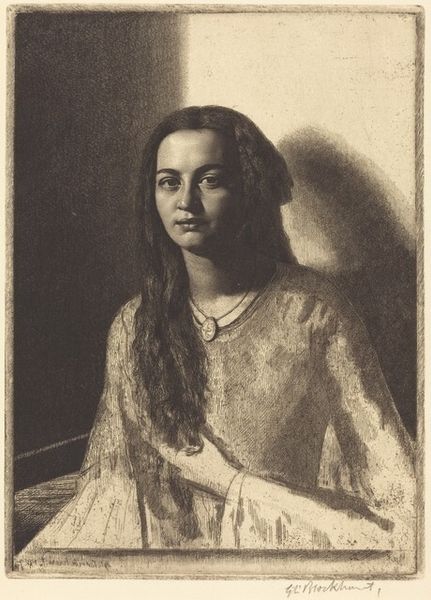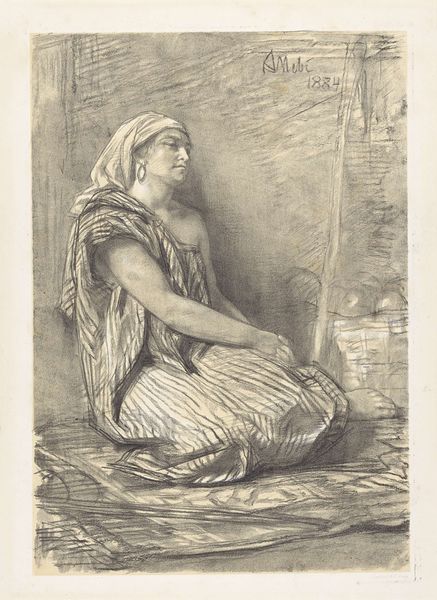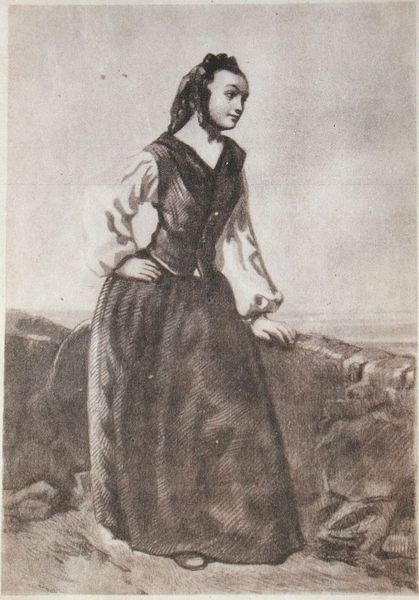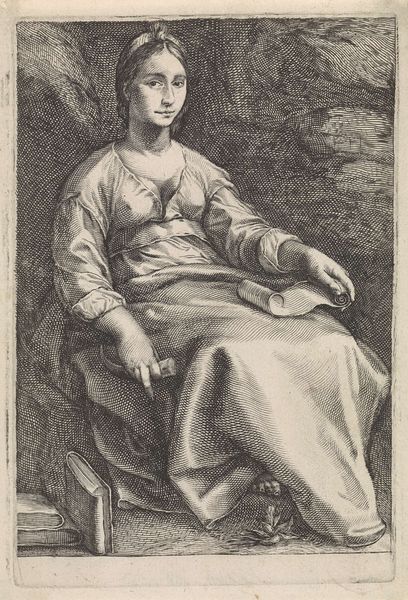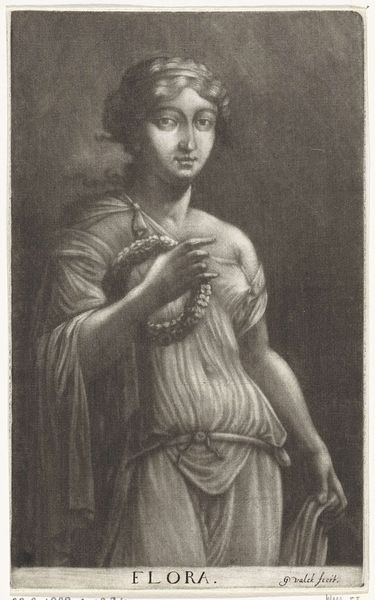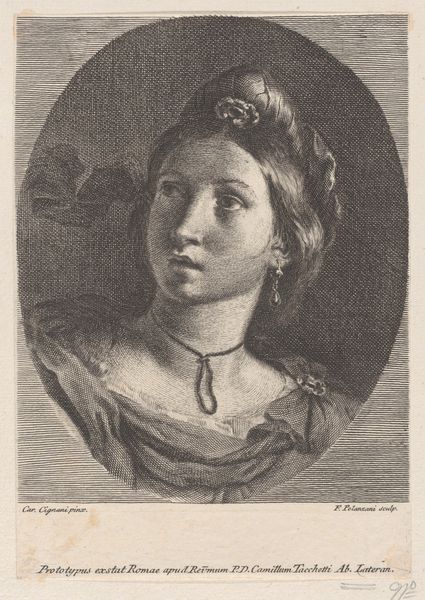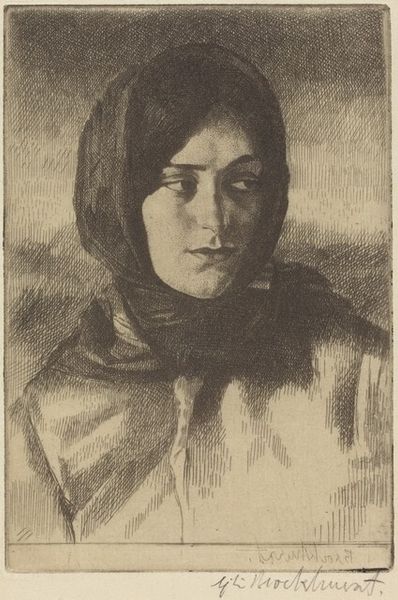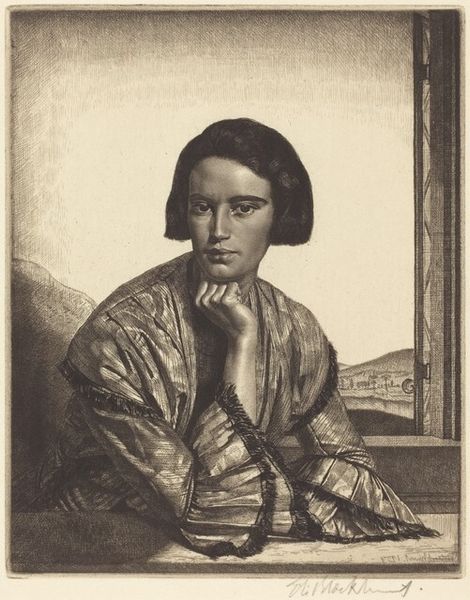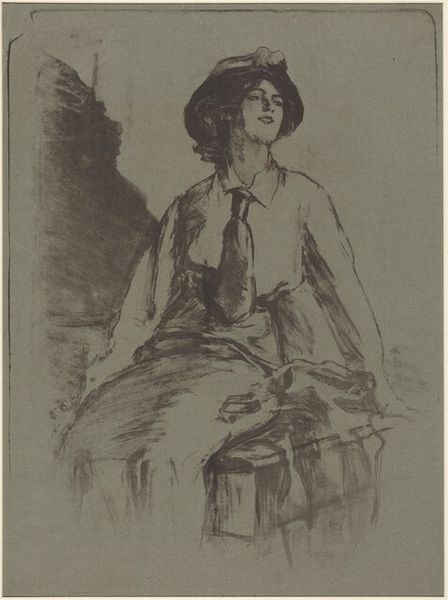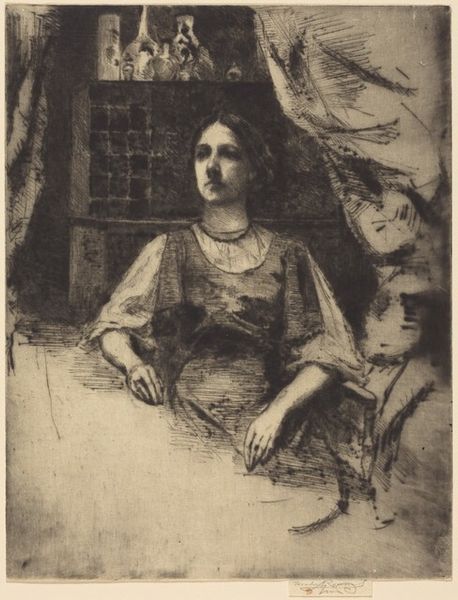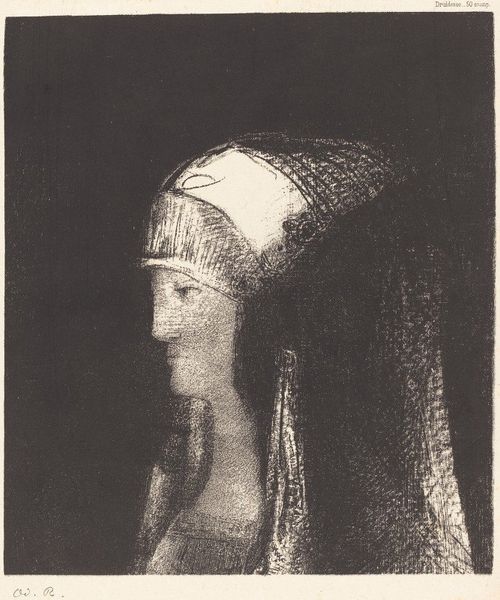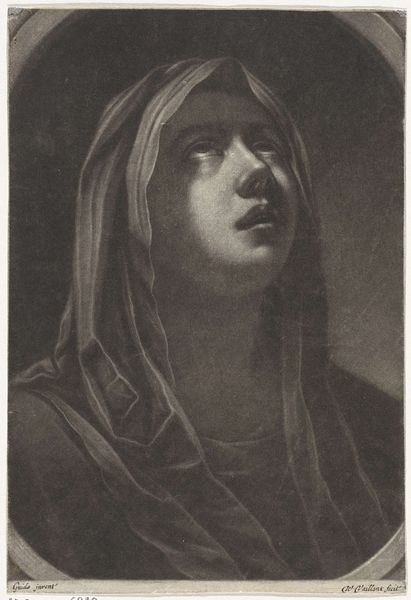
drawing, print, etching, dry-media
#
portrait
#
drawing
# print
#
etching
#
charcoal drawing
#
dry-media
#
pencil drawing
#
geometric
#
portrait drawing
#
modernism
Dimensions: plate: 21.11 × 17.62 cm (8 5/16 × 6 15/16 in.)
Copyright: National Gallery of Art: CC0 1.0
Curator: Here we have Gerald Leslie Brockhurst’s "La Tresse," created in 1926. It's an etching, a printmaking technique that results in fine, detailed lines. Editor: It's strikingly melancholic, isn't it? The way the figure’s draped dress hangs and how her gaze avoids meeting ours...it feels intensely personal. What can you tell me about the process Brockhurst would have used to achieve this tonal effect? Curator: Well, the etching process involves using acid to bite into a metal plate, traditionally copper or zinc. The artist would cover the plate with a waxy, acid-resistant ground and then draw their design into it, exposing the metal. He might have manipulated the depth of the lines to control how the ink takes, affecting the lights and darks, to create an emotionally resonant image such as this one. We might read it through the lens of post-war femininity, perhaps the shifting roles and societal expectations experienced by women after World War One. Her withdrawn gaze feels telling, don't you think? Editor: Absolutely, I'm interested in how those dense blacks around her shoulders, versus the wispy rendering of the braid she’s holding, invite that interpretation. This duality, a somber solidity versus fleeting ethereality...it’s carefully constructed using those material contrasts to create meaning, wouldn’t you say? The contrast of the dark ink with the paper surface underscores this tension so successfully. Also, consider the title; hair has traditionally been considered the pinnacle of a women’s virtue; to showcase that, and also portray this woman in apparent isolation really emphasizes this inner tension, post WWI. Curator: It raises fascinating questions about beauty standards and societal constraints during the interwar period, wouldn't you agree? The gaze avoids ours, perhaps out of self awareness or the weight of what it must have felt like living between two significant wars in such volatile times. Her self-possession, shadowed in these etching methods creates a layered representation of femininity that resists easy categorization. Editor: Definitely. Thinking about it in terms of printmaking and consumption, how would audiences in the 1920s have engaged with an artwork like this, made by way of more ‘mass production’ style production than say, an original oil painting? Did the etching medium help further convey these intersectional ideas on female virtue? Curator: Absolutely, there’s a possibility for democratisation there: this would enable it to have been available to a wider audience than if it had only existed as an original drawing or painting. Ultimately the layered complexity invites a critical reassessment of Brockhurst and the representation of women in his works. Editor: Exactly, the piece pushes us to consider the interplay between the artwork’s material production and the nuanced representation of women at that moment in time.
Comments
No comments
Be the first to comment and join the conversation on the ultimate creative platform.
